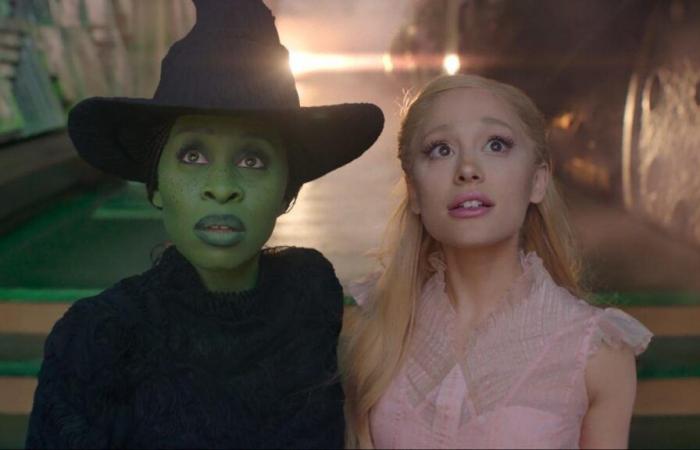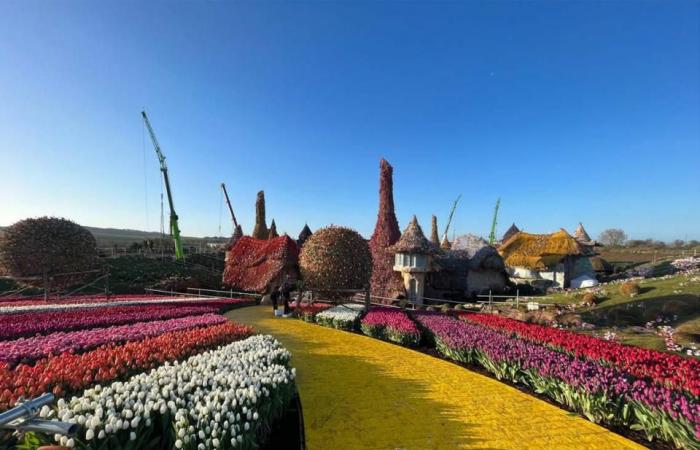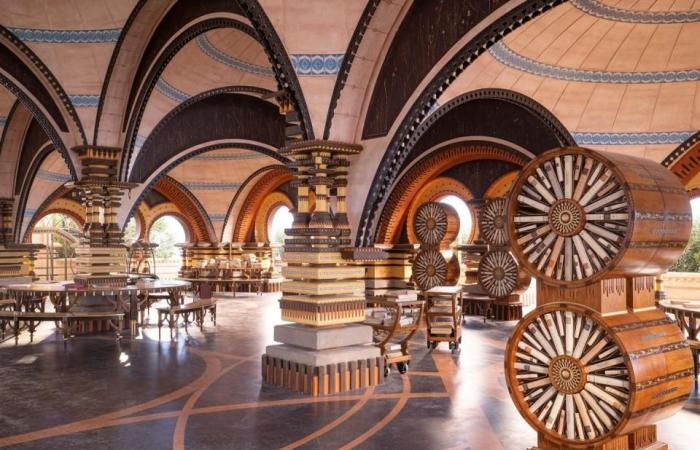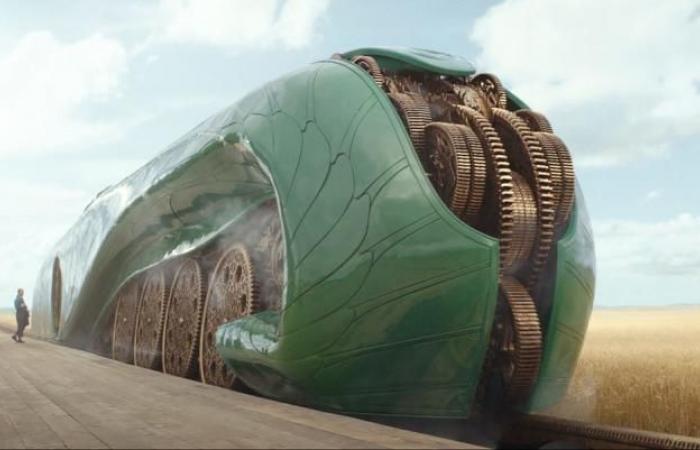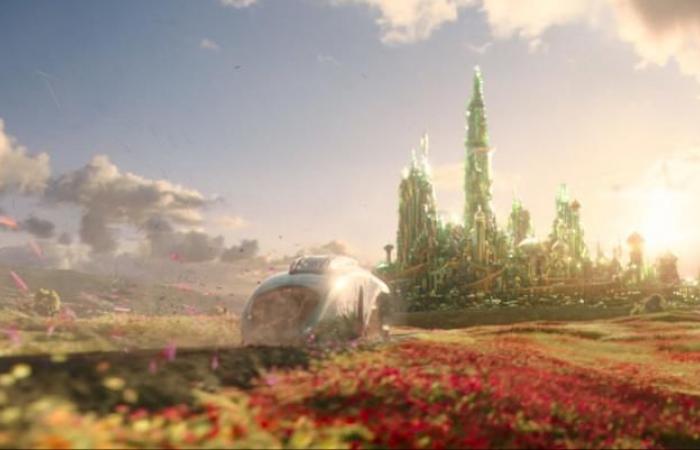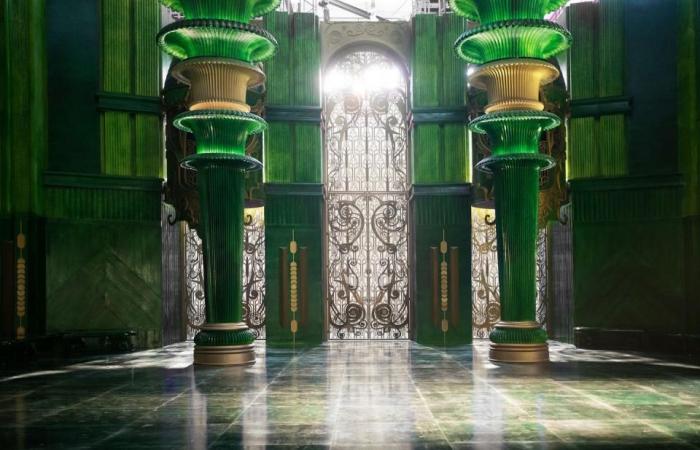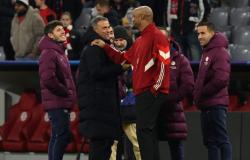Operatic turns by Cynthia Erivo and Ariana Grande. Sing-along-songs (“Popular!” “Defying Gravity!”) for fans of the stage-to-screen adaptation. Tour-de-force direction by Crazy Rich Asians’ Jon M. Chu. Pick your pleasure: the movie Wicked has something for everybody.
But for design fans, the true star of the burgeoning blockbuster Wicked are the eye-popping sets. With a reported budget of $150 million, no expense was spared in conjuring visual backdrops everything from the Munchkinland to the Emerald City.
“I’ve done a lot of very big films,” says production director Nathan Crowley, a Brit who also worked on Interstellar and The Dark Knightand who created the sets on three massive backlots in the English countryside. “But this was the biggest film by far I’ve ever done in my life.”
Production designer Nathan Crowley on the set of Wicked.Courtesy of Universal Pictures
Based on author Gregory Maguire’s revisionist retelling of L. Frank Baum’s 1900 novel The Wonderful Wizard of Oz, Wicked—which was first turned from a book into a long-running Broadway musical—tries to bring a sense of humanity (and a back story) to one of the biggest villains in storybook history: the Wicked Witch of the West. In adapting the story for film, Crowley looked to classic Americana—from the endless fields and skies of the Great Plains, which inspired the landscape around Oz, to Chicago’s modernist architecture, the catalyst for the awe-inspiring Emerald City. “It’s an American fairy tale,” says Crowley, who studied architecture before turning to film design.
The designer says that Chu, the director, set the bar for the film’s visuals. “He wanted it to be wondrous, magical and colorful,” he says. “He doesn’t say what it should look like, he just makes you push it and push it to the edge of insanity. And I love that he doubles down like that.”
Here, the designer gives an inside look at how he created the film’s jaw-dropping sets.
Munchkinland
The yellow brick road leads to Munchkinland. Courtesy of Universal Pictures
The film opens with Munchkinland—“a vibrant tapestry woven from sunshine and tulips,” as Crowley describes it. He built it on a backlot that spanned 6.8 acres in the British countryside. The camera pans over fields planted in a rainbow of tulips—nine million in all, grown for the production by a local flower farmer—then arrives in a village with a Middle Earth vibe. Here, the Munchkins—including Bok Woodsman (Ethan Slater), the lovestruck character with his heart set on Grande’s Glinda—are joyously celebrating the death of the Wicked Witch. That is, before the movie goes back in time to reveal how the witch—once a misunderstood, green-skinned child named Elphaba—grew up to be so fearsome.
Crowley designed the village around a cluster of stucco house with greenery-covered roofs shaped like witches’ hats. The Munchkins are farmers who grow tulips for colorful dyes. “The central village is a living kaleidoscope, houses painted in riotous hues and doors adorned with intricate tulip carvings,” the designer says. “The market square overflows with bolts of dyed cloth, skeins of yarn, and perhaps even tulip-infused treats. It’s a celebration of color!”
Shiz University
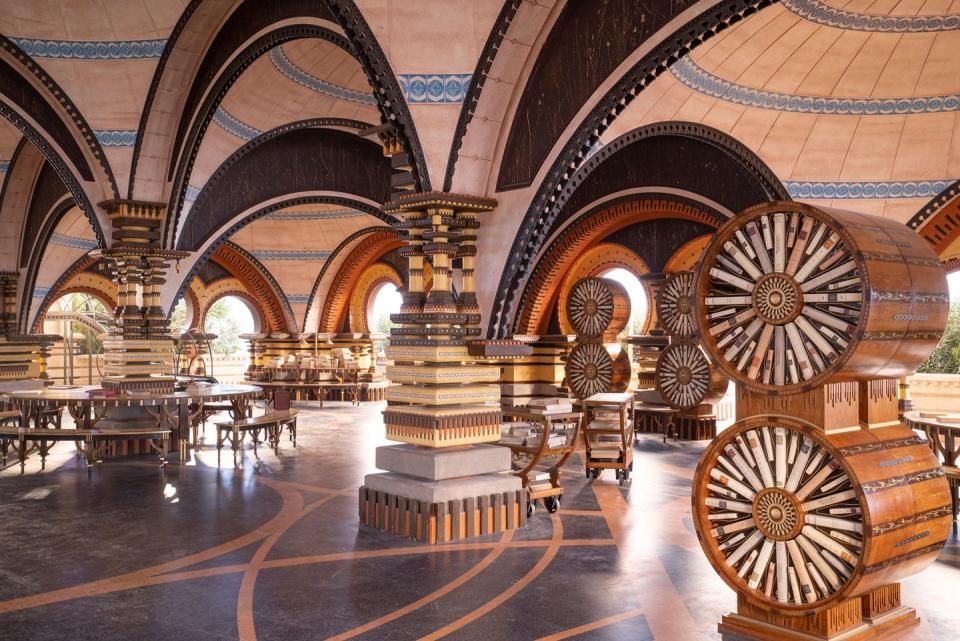
The library at Shiz UniversityGiles Keyte
Part Venetian palazzo, part Hogwarts, and part Harvard, Wicked’s Shiz University is where the top students in Oz—including witches-in-training Elphaba and Glinda—go for their magical education. Here, they sharpen their sorcery skills and learn cutting-edge science from professors like Dr. Dillamond, a wise but persecuted goat played by Peter Dinklage. “Shiz was one of my favorite sets,” Crowley says. “It was ginormous.”
Since Oz existed before animals were subjugated to humans, there was no such thing as a horse-drawn carriage. Students entered Shiz by boat, necessitating the need for a water entrance set with functional boat docks. A massive arch leads to a Gothic-style edifice built around an inner courtyard. This was inspired by the monumental arch designs for Chicago’s neoclassical White City, built for the 1893 Columbian Exposition.
A highlight is the Shiz Library, a vaulted and arched space that hosts a spectacular Fred Astaire-like dance scene, “Dancing Through Life,” featuring Prince Fiyero (Jonathan Bailey). “We conceived a design featuring giant, rotating bookshelves,” Crowley says.
The Emerald City Express
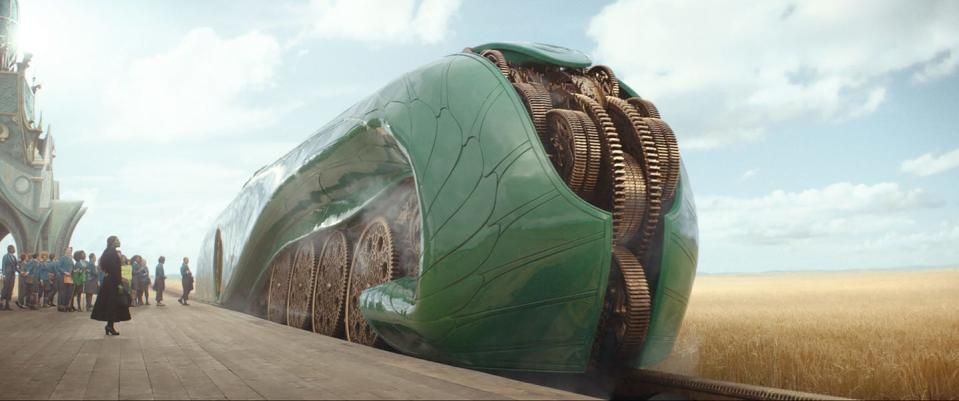
The Emerald City Express train. Courtesy of Universal Pictures
Since the story hinges on getting Elphaba and Glinda from Shiz to the Emerald City in “One Short Day,” the designers had to come up with a suitable transportation option—one that felt in keeping with the wizard’s knack for advance technology. The solution was a train that runs not on steam, but on clockwork. “I’ve always been fascinated by the intricate, beautiful mechanical figures—automatons—built during the reign of Louis XV,” Crowley says. He was also inspired by illusionist and watchmaker Jean-Eugene Robert Houdin’s mechanical orange tree.
The resulting 106-foot train is a real locomotive that runs the length of a field planted with barley in an echo of the American heartland. “It’s reminiscent of the paintings of Andrew Wyeth, or the movie Days of Heaven,” he adds. “If you look at American westerns, it tends to be cities or big, flat landscapes. It’s the Americana of it all.”
The Emerald City
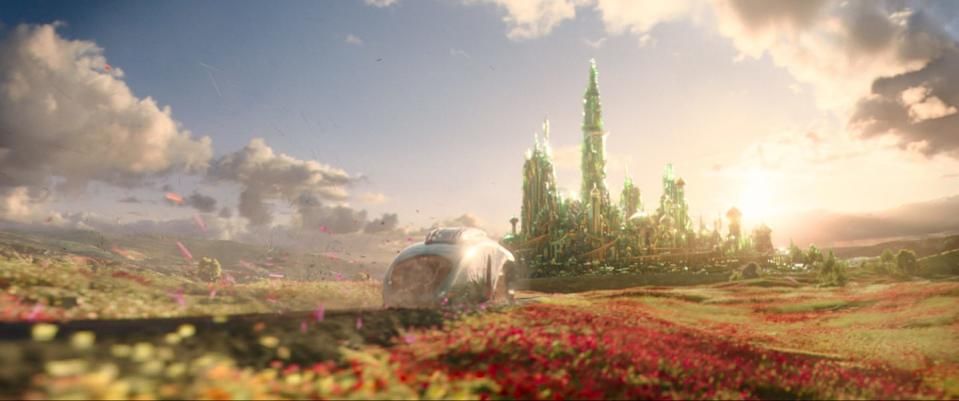
Universal Pictures
A home for a wizard has to be awe-inspiring and Oz’s Emerald City is just that and more. Here again, Crowley took inspiration from Chicago’s White City. The result combines neoclassical architecture with the flourishes of Art Nouveau. “This wasn’t any city,” he says. “This was Oz, a land of fantastical whimsy…a dream conjured by a powerful wizard. It had to rise from the landscape like a singular emerald jewel, a profile etched in the memory of every Ozian, a myth they whispered about with longing. Tricky business indeed!”
The exterior was designed digitally with CGI. “Detailed illustrations were paramount, capturing every curve, every emerald facet of this fantastical metropolis,” he says. This was merged with a built set with structures that rose almost 45 feet in height. The “Wizamania” stage culminates in a dance scene orchestrated around a massive fountain that is a “blossoming marvels, rotating and unfolding like a giant flower.”
The Wizard’s Palace

The Wizard Palace’s Great Hall. Giles Keyte
When Elphaba and Glinda enter the Wizard Palace’s Great Hall, they walk through a towering space filled with translucent green towers and huge circular windows. Much of this was built for the movie. “We have to give the actors enough set to help them get into character,” Crowley says. “With the Great Hall, they needed to feel intimidated. They’re going to meet the Wizard. I should feel scary. And then you get into the throne room and there’s a giant mechanical head. It’s a 20-foot-high mechanical automaton built with hydraulics and it moves and comes through the curtains. And there is a puppeteer who moves the head. It’s fantastic to see it come to life.”
You Might Also Like
-
From the Archive: Tour Sarah Jessica Parker’s Relaxed Hamptons Retreat
-
75 Small (But Mighty) Kitchens to Steal Inspiration from Right This Instant

